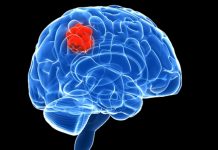Overview
The uncontrolled growth of cells in the testicles leads to the testicular cancer.
The testicle is the male sex organ part of male reproductive system. This normally produces the male hormone testosterone.
This type is considered to be one of the most common cancers in young men.
Testicular cancer is a disease that occurs when abnormal cells in the testicles (testes) begin to grow in an uncontrolled manner.
The testicular cancer has very high chance of cure provided if detected in the early stage. However this is not the thing in all the cases. Many cases go undetected until their advanced stage reason being denial and embarrassment about the testicles stops men to report in the early stages.
Causes of Testicular Cancer
The exact cause of testicular cancer is unknown. The risk of cancer of the testicles is increased in males whose testicles did not move down normally into the scrotum which holds the testicles during development. This problem should be corrected in early childhood otherwise may proof to be fatal and lead in some cases to testicular cancer in older age.
Other conditions such as cryptorchidism, infertility, Klinefelter syndrome may also form the major risk factors for developing the disease. A family history of testicular cancer may also be the cause of this disease.
The most common symptom of testicular cancer or the sign is a painless lump in the testicle. This lump can be small or large, and it can be hard or soft.
The other symptoms or signs of testicular cancer are some men also will have discomfort or swelling in the testicle that can mimic an infection, breast swelling or tenderness also can occur and if cancer has spread beyond the testicle, then back or abdominal pain and shortness of breath may also occur.
Testicular Cancer Treatment Methods
The specific course of testicular cancer treatment will depend on the type of cancer cells involved and whether the cancer has spread beyond the testes. Usually there are four kinds of treatments to treat testicular cancer.
They are the surgery called the radical inguinal orchiectomy, the external beam radiation therapy, the chemotherapy which is used to kill cancer cells outside the testicle and if any cancer cells left behind after the surgery and the bone marrow transplant.
In this procedure, bone marrow is taken from the patient, treated with drugs to kill any cancer cells and then frozen. After the treatment is complete the frozen marrow is put back into the patient.
The treatment method opted for testicular cancer depends on the type and the stage of the cancer. The age and overall health also are factors in choosing treatment options.
There are different types of testicular cancer and their prognosis statistics are slightly different. As with other types of cancer, the chances of recovery or prognosis also vary depending on the stage of the cancer.
Regular self-examination is an important health habit. But it can’t substitute for a doctor’s examination. Self examination is always a better option for preventing the testicular cancer from spreading or advancing.
Any pain or discomfort in the scrotum, pelvis, or lower back should be reported to the doctor for thorough check up and to confirm the testicular cancer.
Testicular Cancer >> Testicular Cancer Symptoms | Testicular Cancer Treatment







